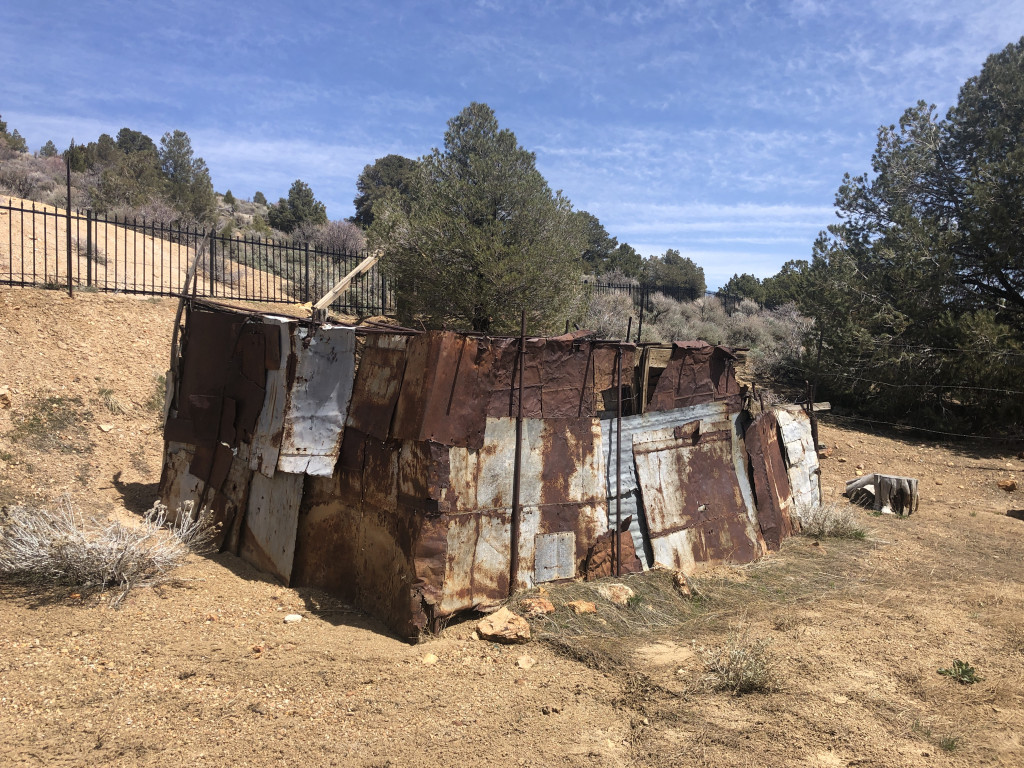After the Pyramid Lake Indian War in 1860 and ongoing environmental degradation resulting from mining and ranching, the Northern Paiute had to find alternative ways to make a living. One way was to settle on the outskirts of Virginia City, Nevada, which was, at the time, home to the first silver boom in the United States.
The Northern Paiute constructed post-contact dwellings (locally known as wikiups) as they moved closer to the historic mining town of Virginia City, now a National Historic Landmark and District. Traditional Northern Paiute houses were framed with willow poles and covered with cattail, willow, and sagebrush bark to create a conical dome shape. Early photographs of these settlements dating to the 1870s show that while traditional dwellings were still used, many featured modifications such as the use of canvas, sheet metal, iron pipe, and stove pipe chimneys.
Destruction of most Northern Paiute post-contact dwellings in Virginia City took place throughout the 20th and 21st Centuries as a result of mining activities, residential expansion, and unauthorized excavation and destruction of archaeological sites. Some have been recorded by archaeologists, but never designated as architecture so that there have been no protections against removing them. One of, if not the last, standing post-contact dwellings in Virginia City, was brought to the attention of the Conservancy in September 2022 by archaeologist Margo Memmott, Cultural Resource Manager for Broadbent and Associates. Perhaps occupied by Indigenous residents until as late as the 1930s, the “later style” structure was located on a parcel owned by Mr. Richard Correll, who was aware of its uniqueness and historic importance. In March 2023, the half-acre property was purchased by the Conservancy as a POINT-6 site, making it the fifth preserve in Nevada.




